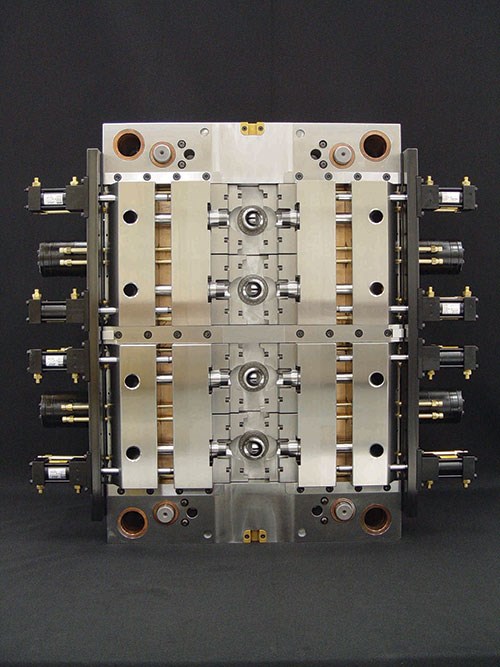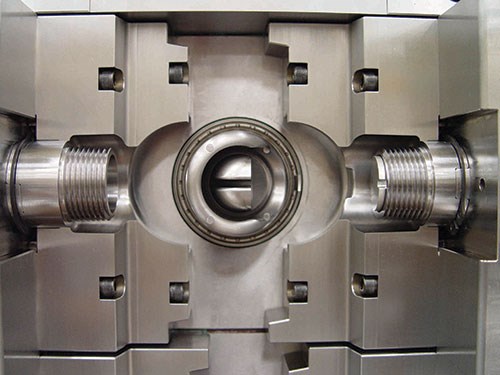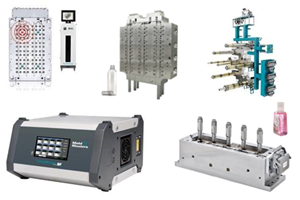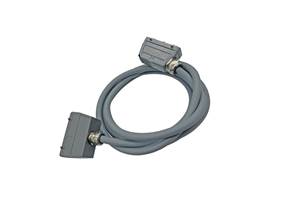Temperature Control Technology Streamlines Sampling
This moldmaker speeds tool tryouts with machine-side systems that combine all needed functionality for temperature and flow-rate testing into a single unit.
Pyramid Mold & Tool isn’t the only mold manufacturer to add sampling capability in recent years. However, the company’s approach to these services demonstrates an understanding that a given mold’s functionality can be impacted by more than just mechanical and dimensional stability issues. Success or failure also hinges on both the temperature and the turbulent flow rate of the cooling water. Jonathan Heyes, who oversees the company’s tech center, says determining the proper values for these key metrics goes a long way toward streamlining production at customers’ facilities—and, by extension, driving new business for Pyramid.
What’s more, the company’s experience demonstrates that flow-rate and temperature tests don’t have to be as laborious and time-consuming as conventional wisdom might suggest. Compared to traditional methods, Pyramid’s process is simpler and faster, and it involves less equipment, Heyes says. This is possible thanks to Microgel, a line of combination chiller/temperature control units (TCUs) from Frigel that pack all needed functionality into a single, independently controlled, machine-side system.
A Critical Service
Although cooling water temperature and turbulent flow rate are important to the operation of any mold, Pyramid’s customers derive particular benefit from having these metrics determined in advance. Tooling manufactured at the company’s 31,000-square-foot facility in Rancho Cucamonga, California, goes primarily to international processors, most of which produce medical parts. “For medical parts used in the human body, the 10,000th part has to be as good as the first,” Heyes explains. “Tolerances are incredibly tight, which means I need to determine the proper turbulent flow rate and cooling water temperature and hold it, so I know the mold can achieve that tolerance.”
That’s why Pyramid sought to include flow-rate and temperature testing from the very outset when it opened up a new tech center for mold testing and validation in 2009. With traditional methods, however, this would have been far more difficult. Typically, the process involves connecting injection presses to various temperature control units and using separate chillers for delivering cooler water. These setups also employ separate hoses, manifolds and pressure gages. Repeatedly connecting and disconnecting all of this equipment makes the process particularly laborious for applications like testing multiple molds or different materials, or comparing one mold half to another. It can also increase the time required to achieve target temperatures. Finally, fluctuating water source pressure can hamper the ability to detect the optimum pressure differential for the mold.
An Alternative Means
At Pyramid, the process looks very different. The company uses three Microgel chiller/TCUs, each of which is dedicated to its own molding press and operates independently of the other units. Each system has its own refrigeration system, and the units are available with either one or two temperature control units inside a compact cabinet. Pyramid takes full advantage of the ability to independently control different zones. Meanwhile, servo-proportional valves ensure consistent, precise control of temperatures ranging from 46°F to 195°F. High-flow process pumps are said to ensure delivery of high turbulent flow throughout the mold.
“If I want to test the mold with 80-degree water or test it with 190-degree water, or if I want to test half of the mold at one temperature and the other half at a different temperature, and test it with different materials, it’s all right there at the touch of a button,” Heyes says. “I don’t have to switch out a chiller or a TCU and hook up all the hoses and other equipment, which would cost us time and money.”
The systems also reduce the time required to reach target temperature. “I’ve seen it take two or more hours for a mold to get up to temperature with a traditional TCU, but it takes less than half that time with the chilller/TCU unit,” he says. “I’m even able to speed up mold change-over time because the unit evacuates and drains a mold without having to manually spray it out. A simplified, faster and more accurate approach lets me get more tests done each day, which equates to more jobs through the shop.”
However, he emphasizes that the true advantage of a simplified process isn’t so much what it does for Pyramid, but what it does for the company’s customers. Along with every mold, those customers receive a process sheet detailing the appropriate set points for the cooling water’s pressure differential, flow rate and temperature. That translates to less work on their end to ensure that any given mold will consistently produce the highest-quality part with the lowest cycle time, regardless of the material used. “All the kinks are worked out before they get the tool,” Heyes says. “That makes our customers happy and keeps them coming back to Pyramid.”
Related Content
Hot Runner Systems, Controllers, Auxiliary Injection Unit Exhibitions
Mold-Masters exhibits a wide variety of new and enhanced systems and technologies at K Show like the TempMaster manifold plastic leak detection, the PET-Series two-stage hot runner system and Fusion Series G3.
Read MoreStandard Hot Runner Cable Range Extension
Hasco is now offering its H12251 cable in two different lengths and four different wiring standards.
Read MoreThe Ins and Outs of Hot Runner Temperature Control
A training checklist that explains the why and how of proper hot runner temperature control and system management.
Read MoreRead Next
How to Use Strategic Planning Tools, Data to Manage the Human Side of Business
Q&A with Marion Wells, MMT EAB member and founder of Human Asset Management.
Read MoreAre You a Moldmaker Considering 3D Printing? Consider the 3D Printing Workshop at NPE2024
Presentations will cover 3D printing for mold tooling, material innovation, product development, bridge production and full-scale, high-volume additive manufacturing.
Read MoreHow to Use Continuing Education to Remain Competitive in Moldmaking
Continued training helps moldmakers make tooling decisions and properly use the latest cutting tool to efficiently machine high-quality molds.
Read More









.jpg;maxWidth=300;quality=90)






_300x250 1.png;maxWidth=300;quality=90)










